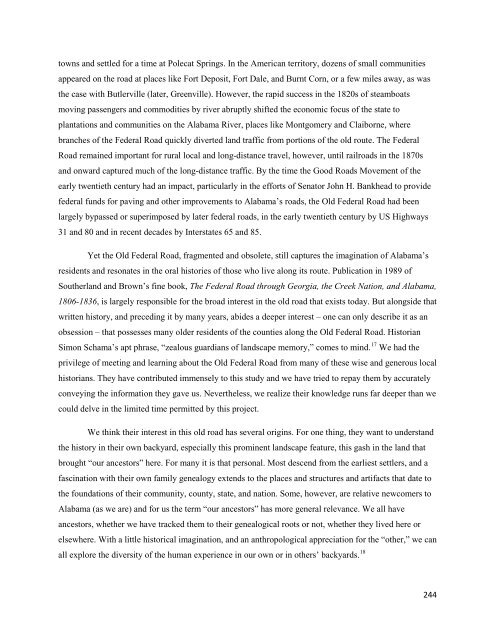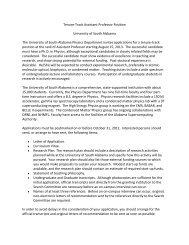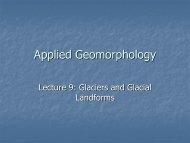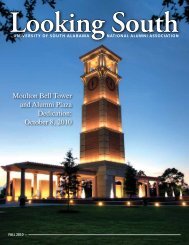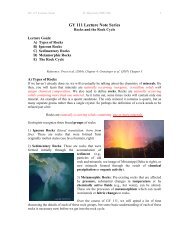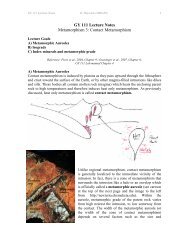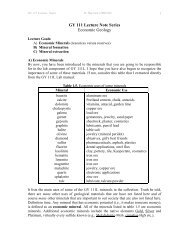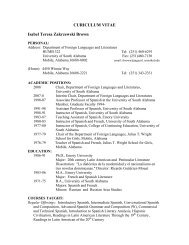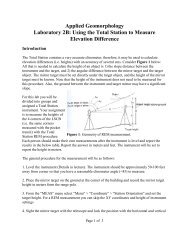Archaeological Survey of the Old Federal Road in Alabama
Archaeological Survey of the Old Federal Road in Alabama
Archaeological Survey of the Old Federal Road in Alabama
You also want an ePaper? Increase the reach of your titles
YUMPU automatically turns print PDFs into web optimized ePapers that Google loves.
towns and settled for a time at Polecat Spr<strong>in</strong>gs. In <strong>the</strong> American territory, dozens <strong>of</strong> small communitiesappeared on <strong>the</strong> road at places like Fort Deposit, Fort Dale, and Burnt Corn, or a few miles away, as was<strong>the</strong> case with Butlerville (later, Greenville). However, <strong>the</strong> rapid success <strong>in</strong> <strong>the</strong> 1820s <strong>of</strong> steamboatsmov<strong>in</strong>g passengers and commodities by river abruptly shifted <strong>the</strong> economic focus <strong>of</strong> <strong>the</strong> state toplantations and communities on <strong>the</strong> <strong>Alabama</strong> River, places like Montgomery and Claiborne, wherebranches <strong>of</strong> <strong>the</strong> <strong>Federal</strong> <strong>Road</strong> quickly diverted land traffic from portions <strong>of</strong> <strong>the</strong> old route. The <strong>Federal</strong><strong>Road</strong> rema<strong>in</strong>ed important for rural local and long-distance travel, however, until railroads <strong>in</strong> <strong>the</strong> 1870sand onward captured much <strong>of</strong> <strong>the</strong> long-distance traffic. By <strong>the</strong> time <strong>the</strong> Good <strong>Road</strong>s Movement <strong>of</strong> <strong>the</strong>early twentieth century had an impact, particularly <strong>in</strong> <strong>the</strong> efforts <strong>of</strong> Senator John H. Bankhead to providefederal funds for pav<strong>in</strong>g and o<strong>the</strong>r improvements to <strong>Alabama</strong>’s roads, <strong>the</strong> <strong>Old</strong> <strong>Federal</strong> <strong>Road</strong> had beenlargely bypassed or superimposed by later federal roads, <strong>in</strong> <strong>the</strong> early twentieth century by US Highways31 and 80 and <strong>in</strong> recent decades by Interstates 65 and 85.Yet <strong>the</strong> <strong>Old</strong> <strong>Federal</strong> <strong>Road</strong>, fragmented and obsolete, still captures <strong>the</strong> imag<strong>in</strong>ation <strong>of</strong> <strong>Alabama</strong>’sresidents and resonates <strong>in</strong> <strong>the</strong> oral histories <strong>of</strong> those who live along its route. Publication <strong>in</strong> 1989 <strong>of</strong>Sou<strong>the</strong>rland and Brown’s f<strong>in</strong>e book, The <strong>Federal</strong> <strong>Road</strong> through Georgia, <strong>the</strong> Creek Nation, and <strong>Alabama</strong>,1806-1836, is largely responsible for <strong>the</strong> broad <strong>in</strong>terest <strong>in</strong> <strong>the</strong> old road that exists today. But alongside thatwritten history, and preced<strong>in</strong>g it by many years, abides a deeper <strong>in</strong>terest – one can only describe it as anobsession – that possesses many older residents <strong>of</strong> <strong>the</strong> counties along <strong>the</strong> <strong>Old</strong> <strong>Federal</strong> <strong>Road</strong>. HistorianSimon Schama’s apt phrase, “zealous guardians <strong>of</strong> landscape memory,” comes to m<strong>in</strong>d. 17 We had <strong>the</strong>privilege <strong>of</strong> meet<strong>in</strong>g and learn<strong>in</strong>g about <strong>the</strong> <strong>Old</strong> <strong>Federal</strong> <strong>Road</strong> from many <strong>of</strong> <strong>the</strong>se wise and generous localhistorians. They have contributed immensely to this study and we have tried to repay <strong>the</strong>m by accuratelyconvey<strong>in</strong>g <strong>the</strong> <strong>in</strong>formation <strong>the</strong>y gave us. Never<strong>the</strong>less, we realize <strong>the</strong>ir knowledge runs far deeper than wecould delve <strong>in</strong> <strong>the</strong> limited time permitted by this project.We th<strong>in</strong>k <strong>the</strong>ir <strong>in</strong>terest <strong>in</strong> this old road has several orig<strong>in</strong>s. For one th<strong>in</strong>g, <strong>the</strong>y want to understand<strong>the</strong> history <strong>in</strong> <strong>the</strong>ir own backyard, especially this prom<strong>in</strong>ent landscape feature, this gash <strong>in</strong> <strong>the</strong> land thatbrought “our ancestors” here. For many it is that personal. Most descend from <strong>the</strong> earliest settlers, and afasc<strong>in</strong>ation with <strong>the</strong>ir own family genealogy extends to <strong>the</strong> places and structures and artifacts that date to<strong>the</strong> foundations <strong>of</strong> <strong>the</strong>ir community, county, state, and nation. Some, however, are relative newcomers to<strong>Alabama</strong> (as we are) and for us <strong>the</strong> term “our ancestors” has more general relevance. We all haveancestors, whe<strong>the</strong>r we have tracked <strong>the</strong>m to <strong>the</strong>ir genealogical roots or not, whe<strong>the</strong>r <strong>the</strong>y lived here orelsewhere. With a little historical imag<strong>in</strong>ation, and an anthropological appreciation for <strong>the</strong> “o<strong>the</strong>r,” we canall explore <strong>the</strong> diversity <strong>of</strong> <strong>the</strong> human experience <strong>in</strong> our own or <strong>in</strong> o<strong>the</strong>rs’ backyards.18244


